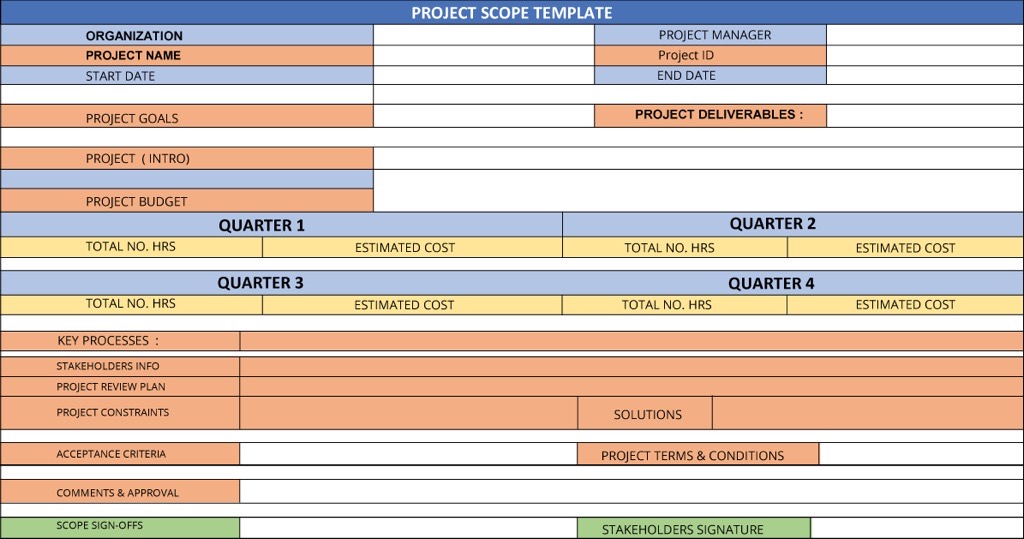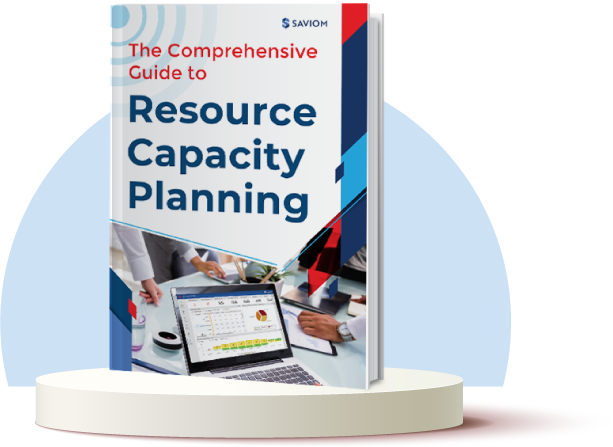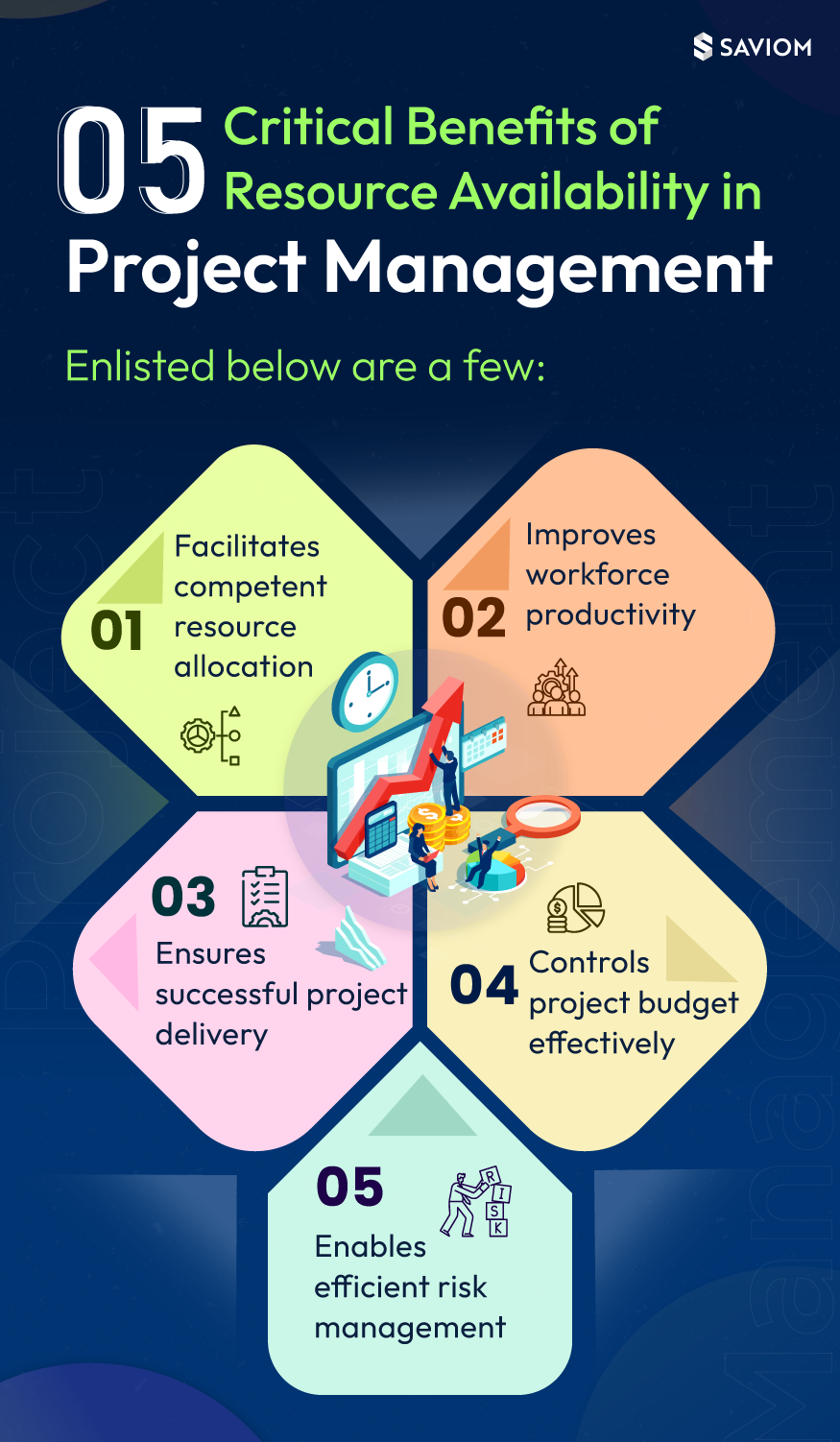According to a survey, 55% of project managers tend to create a project scope document before executing them.
The scope document is first created during the initiation stage of a project. It highlights the project goals and gives a high-level description of the user requirements that are considered during the entire lifecycle.
For a project manager, it is very crucial to regulate all project attributes such as budget, timeline, quality, resources, risks, etc. However, they can only be controlled if the project’s scope does not take a detour.
Thus, creating a detailed and accurate scope document is vital as it ensures that all deliverables are defined clearly before the project’s onset. It results in successful project delivery.
Here is the detailed blog post that will help you create an effective project scope document for your organization. But first, let’s delve into the basics.
What is a project scope document?
The project scope document, also known as the statement of work (SOW), defines various aspects of the project, such as goals, deliverables, deadlines, milestones, budget, etc. It is part of the project plan that outlines the details required to deliver a project successfully.
There could be multiple modifications throughout the project lifecycle. Therefore, it’s imperative to create a scope document at the beginning of the project, which serves as a baseline. In addition, it keeps the project manager, stakeholders, and the team aligned with the critical details that can secure the project’s fate.
Prior to understanding the essential elements of a project scope document, we must understand its importance.
Why do you need a project scope document?
A project scope document acts as a record of what was agreed upon, thus, eliminating disparities and ensuring alignment between the client’s expectation and the final deliverable.
For every new initiative, the project scope document will define the end product delivered to the client, its timeline, and the indicated budget.
A clearly defined scope document will serve as a reference point for any future changes you need to make to your project during execution. That way, the project manager is in a better position to assess the repercussions and make informed decisions. The scope is also crucial in estimating the cost of the project.
Moreover, the scope documents address risk factors that might cause changes as the project progresses, thus assisting in risk mitigation and the change control process. Overall, a project scope document ensures everyone is on the same page about what will and won’t be delivered as part of the project and fosters transparency.
Having learned how beneficial a project scope document is, let’s look at its essential components.
Essential components of project scope document
A scope document template can be different for each project based on organizational standards and the nature of the project. However, a few major elements are standard for each of them. They are as follows: –
Goals and deliverables
First and foremost, defining the project’s goals and deliverables is crucial while creating a scope document. It will let the stakeholders know exactly what will be the final deliverable if it is aligned with the client’s expectations, and so on. Furthermore, defining the deliverables helps the team members understand the objective and purpose of the project and keeps them on the same page.
Project schedule & budget
The scope document must include the details about the complete project schedule and the timeline so that stakeholders can know when the project will be completed and the team is aware of the deadline. Moreover, the project budget must be included in the statement in order to avoid any cost escalations and overruns.
Acceptance criteria
Acceptance criteria are included in the scope of the project to cover the exceptional demands of clients. For example, do they want any specific functionality to enhance the user experience? Are they looking for key performance metrics? By filling in all of these details, managers can ensure that every step is executed correctly and the end product meets all these demands.
Key processes
In the scope document, key processes describe the critical practices and processes you intend to cover during the project lifecycle. Each process can be different in terms of the input, tools, and skills required.
Project constraints
Constraints such as time, finances (budget), scope, resources, etc., affect the project’s execution. Therefore, it is essential to include them in the scope document. In addition to keeping the project on track, predefined constraints help us develop a mitigation strategy for any potential risks.

Now that we know what all components are included in the scope statement, Let’s see how an effective project scope can be created.
How to create an effective project scope document?
A scope document is crucial to the organization and clients, so managers must meticulously follow specific steps to get it right.
Here are five ways to create an effective scope document –
Enter every attribute of the project precisely
The purpose of a scope document is to minimize ambiguities and align the end result with the expectation. An unclear scope document may derail the project. Therefore, managers must try to be as specific as possible about every aspect of the project. Also, keep the language consistent and clear and avoid using jargons.
For example, when preparing a project scope for a construction project, you must include attributes such as the goal, project’s location, budget, quality and safety standards, and the proposed project duration to minimize future bottlenecks.
Brainstorm project ideas with the team
As a project manager, it is essential to brainstorm project ideas and take input and suggestions from the team, subject matter experts, and other senior officials before creating the scope document. These insights will ensure accuracy in your scope and help prepare to mitigate any potential risks or challenges down the line.
For instance, to include the details of the project schedule in the scope document, it’s best to get the input from the team and domain experts as they would better know how long it will take to create a wireframe, or do the development. Moreover, you can take cues from lessons learned reports and eliminate the previous errors in estimation and execution. Furthermore, each team member will be on the same page from day one and be familiar with their roles and responsibility.
Use infographics for a better description
Using infographics in the scope document will help managers present complex information into visually appealing and consumable chunks. Elements such as charts, graphs, icons, symbols, colors, and more will help keep the clients and stakeholders engaged and informed about every critical project detail. With stakeholders having limited time, adding infographics makes information delivery faster.
For example- If you’re creating a scope document for a website development project, you should include images and illustrations. By doing this, decision-makers will be able to see all the pertinent details at a glance.
Leverage the scope template
A scope document should contain several standard elements such as project goals, milestones, deliverables, schedule, etc. Using a standard template will save your time and ensure that your documents are consistent and that nothing is left out.
A variety of scope templates are available, depending on the nature of the business. For instance, the scope of an IT project will include software requirements, app requirements, and website concepts. In contrast, the scope of a construction project will consist of safety standards, construction materials, and the project’s location.
The following template entails the critical aspects of a scope document.
Get proper sign-offs from key stakeholders
A stakeholder is an individual or group with a significant interest in an organization. They can be affected by the actions or decisions of the project and the company as a whole. At the same time, their involvement in the company also influences the projects’ strategies and decisions. Thus, once you’ve created your document, it is essential to get the final sign-offs from all parties and stakeholders before moving on to the next stage of project planning. Typically, the project scope document is often evaluated and approved by the project sponsors, C-level executives, or the decision-makers of a firm.
Doing so ensures that all stakeholders are on the same page and agree upon the goals, deliverables, and requirements. Also, if there is any deviation in the scope, managers will be well-prepared to tackle them.
The Bottom line
Whether you’re building a new product from scratch, going through a redesign, or just getting some illustration done, a scope document can keep everyone accountable and maintain the project’s progress. The methods mentioned above will help you create a well-defined scope document and provide a clear picture of the project. This will result in the successful completion of the project within the timeline and budget.
The Glossary
The SAVIOM Solution
SAVIOM is the market leader in offering the most powerful and configurable solutions for managing enterprise resources efficiently and effectively. Having more than 20 years of experience, this Australian-based MNC has a global presence in over 50 countries. It is also popular with more than 100 customers and helps them achieve their business goals. SAVIOM also has products for project portfolio management, professional service automation, and workforce planning software which can be easily customized as per business requirements.














